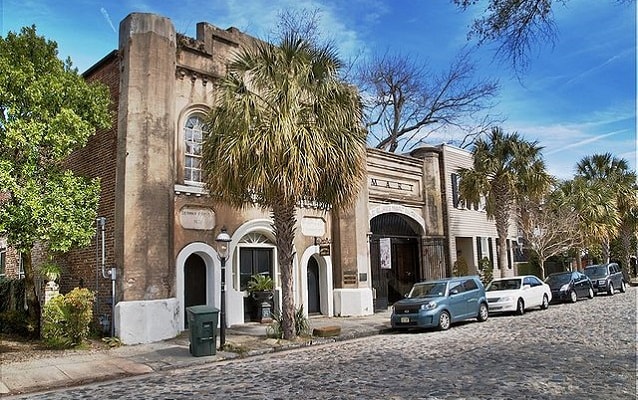Last updated: February 22, 2018
Place
Old Slave Mart

Photo taken by Benjamin Dahlhoff, CC BY 3.0, https://commons.wikimedia.org
The Old Slave Mart, located on one of Charleston's few remaining cobblestone streets, is the only known extant building used as a slave auction gallery in South Carolina. Once part of a complex of buildings, the Slave Mart building is the only structure to remain. When it was first constructed in 1859, the open ended building was referred to as a shed, and used the walls of the German Fire Hall to its west to support the roof timbers. Slave auctions were held inside. The interior was one large room with a 20-foot ceiling, while the front facade was more impressive with its high arch, octagonal pillars and a large iron gate.
During the antebellum period, Charleston served as a center of commercial activity for the South's plantation economy, which depended heavily upon the forced labor of enslaved Africans and their descendants. Customarily in Charleston, enslaved men, women, and children were sold on the north side of the Exchange Building (then the Custom House). An 1856 city ordinance prohibited this practice of public sales, resulting in a number of sales rooms, yards, or marts along Chalmers, State and Queen Streets. One of these belonged to Thomas Ryan, an alderman and former sheriff. Ryan's Mart, now the Old Slave Mart, occupied the land between Chalmers and Queen Street, and contained three additional buildings--a four-story brick tenement building with offices and "barracoon" (slave jail in Portuguese) where enslaved people were held before sales, a kitchen and a morgue. Before the construction of the shed, sales were held in the tenement building or in the yard.
Another auction master, Z.B. Oakes, purchased the property in 1859 and applied for a permit to insert brick trusses for the roof of the shed into the adjacent Fire Hall. When sales were held in the shed, enslaved people stood on auction tables, three feet high and ten feet long, placed lengthwise so enslavers could pass by them during the auction. The building was used for this purpose only a short time before the defeat of the South in the Civil War led to the end of slavery.
Around 1878, the Slave Mart was renovated into a two-story tenement dwelling. In 1938, the property was purchased by Miriam B. Wilson, who turned the site into a museum of African American history, arts and crafts.
